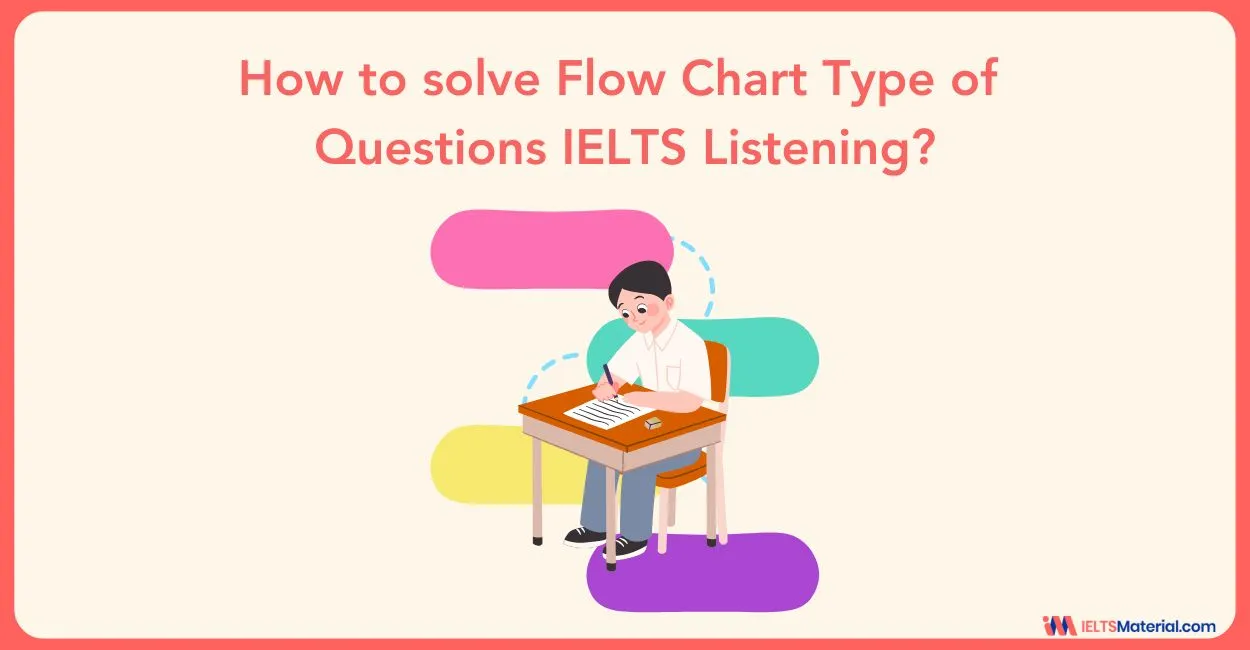How to solve Multiple Choice Question Types in IELTS Reading
Table of Contents

Limited-Time Offer : Access a FREE 10-Day IELTS Study Plan!
Multiple choice questions (MCQs) will be asked in both the General and Academic IELTS Reading tests. Aspirants have to choose the correct answer from a list of possible choices. MCQs type of questions tests your ability to understand the main ideas contained in a passage and the ability to look for specific information. For this, you need to quickly identify the main idea to locate the correct answer. While searching for the answers, you may come across a few options that could be the correct answer to the questions. Although you won’t have time to read the entire passage, you must locate the answers in the passage and find the specific information that gives you the correct answer. In other words, MCQ type of questions requires scanning for specific information as well as understanding information in the passage
Use of Transitional Words
It is highly recommended to read the question first to get an idea of what you may need to look out for in the passage. Usually, the first part of a passage might look correct and contain similar answers, but the second half might change the entire meaning. Transitional words and phrases like but, contrast, and however can change the meaning of a whole passage. Examiners use this trick to distract the examinee. Thus, it is important to read the passage carefully and choose the correct answer by understanding the meaning of each sentence.
How to Answer Multiple Choice Questions
The multiple-choice questions in IELTS Reading are similar to other sections, and answers for MCQs will most likely help in scanning the information in the passage. Go through the description below to know on How to answer MCQs.
Skim-read the Passage and Underline the Keyword
Once you start reading the passage, focus on the introduction and conclusion and skim-read the body paragraphs as the answers will be in the same order. Predict the keywords in the passages and underline them as it will help in locating the answers. When you have found the solution in the passage, go through it carefully to identify the correct option which might have been paraphrased. Pay serious attention to “absolute words” in the answers and the passage as these words usually generalize ideas.
Scan the passage for information
Scanning is an important strategy, and if you have successfully understood the question and the answers options, you should now scan the passage to locate the answers. More often than not, there will be two choices that may be very difficult to choose from as they might have similar meanings. So think about the difference in meaning between these two choices, which will help you get the correct answers.
Use the Process of Elimination
The process of elimination is where you should eliminate the option that is not a suitable answer for the question and is most different from the other answers. You can also eliminate the answer if it is not relevant to the information given in the passage. Process of elimination (POE) helps in narrowing down the options. So, use your time wisely with the POE and increase your chances of getting the answers correct.
Skip a Difficult Question
If any questions stump you, do not waste your time looking for the answers. Instead, move on to the next question. In the end, locate the answer in the passage as it will most likely be between the other answers.
Don’t leave anything blank
If you are helpless and can’t decide which answer is right, then do some guesswork. There’s at least a chance that you’ll guess correctly and get the mark. If you don’t write or mark an answer, the question will be marked ‘wrong’ ( not answered) by the examiner.
These extra notes will be very helpful while attempting the MCQ type of Questions. Therefore, use this strategy and all the tips to practise answering the multiple-choice questions from the IELTS Reading practice tests. This practice will quickly improve both your skills and your level of confidence. Here’s an example of how to do MCQ questions in the IELTS Reading module.
Sample Reading Passage:
| In many industrial or manufacturing workplaces, managing hazards is essential for a successful health and safety system. Hazard management is an ongoing process that goes through five different stages, with each step becoming a stage on a tire hazard management plan. The first step is to identify potential hazards, remembering that hazards are classed as anything that could potentially cause harm not only to people but also to the organization. To illustrate, an industrial accident can cause an injury to employees, but can also result in lost production, broken machinery, and wasted resources for the company, In many cases, local and national government legislation has strict regulations concerning hazard identification, and in many industries, especially those perceived to be dangerous, severe penalties can be incurred by companies overlooking such hazard identification. |
Questions:
Choose answers from letters A-D next to questions 1-5.
1.Why is managing hazards essential in industrial or manufacturing workplaces?
- For well-being and protection of the workers
- For health reasons
- For workplace safety
- All the above
2. According to the passage, how many stages should hazard management undergo?
- Five distinct stages
- More than five stages
- Almost five different stages
- More or less than five stages
3. What is the first step of a hazard management plan?
- Analyze the harm to people
- Analyze the harm to organisation
- Both A & B
- Recognize the risks involved
4. What are the risks involved in an industrial accident?
- Injuries to the workers
- Enormous impact on the economy of the country
- Loss of productivity
- Both A & C
5. According to the passage, on what basis has the government imposed strict regulations on the industries?
- Danger to the life of workers
- Failing to observe hazards
- Recognition of threats
- None of the above
Answers
| 1.All of the above
2. Five distinct stages 3. Both A & B 4. Both A & C 5. Recognition threats. |
Explanation of the Answers:
| For the first question, the answer is mentioned on the second line, which states that managing hazards is essential for a successful health and safety system. So, the answer is “D. All of the above.” Options A, B, & C have been paraphrased to that of the passage’s second line.
For the second question, the answer is given on the third line, which says that the Hazard management process undergoes five different stages. So, the answer is “A. five distinct stages.” Here Option A has been paraphrased. Different refers to distinct. For the third question, the answer is mentioned on the fifth line, which says that the first step is to identify potential hazards, remembering that hazards are classed as anything that could potentially cause harm not only to people but also to the organization. So, the answer is “Both A & B”. Here Option D has been paraphrased where Recognize refers to “identity” and risks is associated with the term “Hazard.” For the fourth question, the answer is given on the sixth line: an industrial accident can cause injuries to the workers, losses in the business’s products, and resources. So, the answer is “D. Both A & C.” Here, loss in business’s production has been paraphrased into loss of productivity. For the fifth question, the answer is mentioned on the eighth line: the government legislation has strict regulations concerning hazard identification in the industries. So, the answer is “C. Recognition of threats.” Here, Option C has been paraphrased where Hazard Identification in the industry means recognizing the threats involved in the industries. |
Check More IELTS Reading Answers
Also check:
Explore IELTS related articles

Start Preparing for IELTS: Get Your 10-Day Study Plan Today!
Recent Articles

Nehasri Ravishenbagam

Nehasri Ravishenbagam

Haniya Yashfeen





Post your Comments